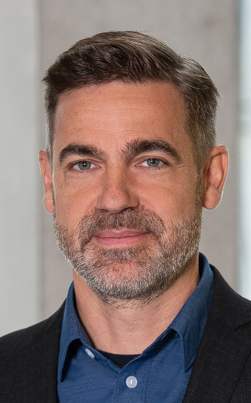ML4Q Concepts
Series #9: 2D Materials for Quantum Technology
The ML4Q Concepts seminar series goes into its nineth round focusing on the topic: 2D Materials for Quantum Technology. The series is organized by Andrea Bergschneider (Uni Bonn), Annika Kurzmann (Uni Köln) and Silvia Viola Kusminskiy (RWTH Aachen)
The seminars will be online, via zoom. The Zoom link will be sent via the cluster’s mailing lists. If you are not affiliated with ML4Q but would like to participate, please drop a line to the ML4Q office. Suggestions for topics/speaker for follow-up seminar series are always welcome via our (ML4Q-internal) Slack workspace!
Seminar schedule

(c) Pawel Hawrylak
18 January 2024, 16:00
Pawel Hawrylak
University of Ottawa
Quantum dots in 2D materials for quantum technologies
We describe here our recent theoretical work on the electronic and optical properties of electrons in quantum dots in 2D crystals[1]. We start with atomistic description of van der Waals materials, graphene and transition metal dichalcogenides (TMDCs)[2]. We discuss similarities and differences and how their properties can be controlled by chemical composition, number of layers, carrier density, vertical electric field and lateral size. We discuss how band nesting and excitons in TMDCs control light-matter interaction [2,3] and how valley and orbital degrees of freedom for electrons and holes determine their potential as spin-valley qubits [4,5]. We next turn to gated bilayer graphene, electrically tunable semiconductor with bandgap in the THz range. We describe lateral confinement due to metallic gates of both electrons and holes and discuss their interaction and formation of electrically tunable excitons, trions and bi-excitons [3,6,7].
[1] A.D.Guclu, P. Potasz, M. Korkusinski and P. Hawrylak,”Graphene Quantum Dots”, Springer 2014; P. Hawrylak, F. Peeters, K. Ensslin, Editors, Carbononics–integrating electronics, photonics and spintronics with graphene quantum dots, Focus issue, Physica status solidi (RRL)-Rapid Research Letters 10 (1), 11(2016).
[2] M. Bieniek, L. Szulakowska, P.Hawrylak, “Band nesting and exciton spectrum in MoS2”, Phys.Rev.B101, 125423 (2020).
[3] C. Sun, F. Figge, I.Ozfidan, M. Korkusinski, X.Yan, L-s Li, P.Hawrylak and J. A.
McGuire, Biexciton binding in colloidal graphene quantum dots”, NanoLetters 15,5742(2015).
[4] L. Szulakowska, M. Bieniek, M. Cygorek, P. Hawrylak, “Valley and spin polarized broken symmetry states of interacting electrons in gated MoS2 quantum dots”, Phys.Rev. B102, 245410 (2020).
[5] A. Altintas, M.Bieniek, A. Dusko, M. Korkusinski, J. Pawlowski, and P. Hawrylak, “Spin-valley qubits in gated quantum dots in a single layer of transition metal dichalcogenides”, Physical Review B 104 (19), 195412, 2021.
[6] Y. Saleem, K. Sadecka, M. Korkusinski, D. Miravet, A. Dusko and P. Hawrylak, “Theory of Excitons in Gated Bilayer Graphene Quantum Dots”, Nano Lett. 23, 2998 (2023).
[7] Marek Korkusinski, Yasser Saleem, Amintor Dusko, Daniel Miravet, and Pawel Hawrylak, “Spontaneous spin and valley symmetry broken states of interacting massive Dirac Fermions in a bilayer graphene quantum dot”, Nano Lett. 23, 7546 (2023)

(c) Hannah Stern
25 January 2024, 11:00
Hannah Stern
University of Cambridge
A quantum coherent spin in a two-dimensional material at room temperature
Quantum networks and sensing require solid-state spin-photon interfaces that combine single photon generation and long-lived spin coherence with scalable device integration, ideally at ambient conditions. Despite rapid progress reported across several candidate systems, those possessing quantum coherent single spins at room temperature remain extremely rare. In this talk, I will show new results of quantum coherent control under ambient conditions of a single-photon emitting defect spin in a two-dimensional material, hexagonal boron nitride. I show that the carbon-related defect has a spin-triplet electronic ground-state manifold and that the spin coherence is governed predominantly by coupling to only a few proximal nuclei and is prolonged by decoupling protocols. I will present our understanding of the optical and spin level structure, and how the specific optical rates we uncover for this system have important implications for potential quantum sensing applications.

(c) Guido Burkard
1 February 2024, 11:00
Guido Burkard
University of Konstanz
Spin Qubits in Carbon and Silicon
Spin-based quantum bits in semiconductor devices allow for high-fidelity quantum gates and long-range interconnects via on-chip superconducting resonators, while their nanoscale dimensions offer various routes to scale-up [1]. This theory talk will describe recent progress towards high-fidelity quantum operations in silicon spin qubit devices and some of the remaining obstacles and challenges. Representing a possible alternative to silicon, graphene with its low nuclear spin density and weak spin-orbit coupling allows for long electron spin relaxation and coherence times. However, the formation of localized states in quantum dots requires some form of badgap engineering, and the mechanisms for spin and valley relaxation have not been completely understood so far. Bilayer graphene has an electrically controllable bandgap that allows for the formation of quantum dots. We present general theoretical considerations regarding the formation of quantum dots in graphene and report on recent progress in understanding the relevant physical mechanisms of spin and valley relaxation in electrostatically gated bilayer graphene quantum dots.
[1] G. Burkard, T. D. Ladd, J. M. Nichol, A. Pan, and J. R. Petta, Semiconductor Spin Qubits, Rev. Mod. Phys. 95, 025003 (2023).

(c) Chuyao Tong
15 February 2024, 11:00
Chuyao Tong
ETH Zurich
Electrostatically defined quantum dots in bilayer graphene
Graphene is a brilliant host for spin qubits because the two main spin decoherence channels are limited: carbon’s low atomic mass gives rise to weak spin-orbit interaction, and the nuclear-spin-free C-12 makes up 98.9% of naturally occurring carbon, suppressing the hyperfine interaction. Monolayer graphene lacks the band gap that is required to electrostatically define and control nanostructures. On the other hand, a band gap can be opened in bilayer graphene (BLG) by applying an electric field perpendicular to the sheet of BLG. With this band gap, we can now realise gate-defined BLG quantum dots in van der Waals heterostructures. We show a high level of control by gate voltage over the quantum dots’ charge, spin, and valley degrees of freedom. With Elzerman readout, we measured promisingly long spin relaxation time T1 ~50ms, comparable to state-of-the-art quantum dot spin qubits. Apart from spin qubits, BLG valley qubits also hold great potential We show that BLG’s valley g-factors in perpendicular magnetic fields are tunable by gate voltages, providing a handle of control. With Pauli blockade readout, we measure very long valley relaxation times T1 approaching 1s, orders of magnitude longer than valley T1s in other systems.

(c) Angelika Knothe
29 February 2024, 11:00
Angelika Knothe
University of Regensburg
Engineering confined states in bilayer graphene quantum dots
Confined quantum dot states are attractive for various applications, from qubits to store quantum information to simulating exotic quantum phases. In gapped bilayer graphene (BLG), one can confine charge carriers purely electrostatically, inducing smooth confinement potentials and thereby limiting edge-induced perturbances while allowing gate-defined control of the confined structure. I will report on a series of works on the theoretical modelling of electrostatically confined single quantum dots and multi-dot systems in BLG. We demonstrate how to engineer the confined quantum states, e.g., by simultaneously tuning the BLG band structure and the confinement [1,2,3]. We set up and parametrize a Hubbard model for multiple interacting dots and study double dots as the smallest multi-dot system [4]. The tunability of the dots’ states by, e.g., gates and a magnetic field opens routes to engineer their properties for future quantum technology applications.
[1] A. Knothe and V. Fal’ko, Physical Review B 101, 235423 (2020).
[2] D. Mayer and A. Knothe, physica status solidi (b) , 2300395 (2023).
[3] S. Möller, L. Banszerus, A. Knothe, L. Valerius, K. Hecker, E. Icking, K. Watanabe, T. Taniguchi, C. Volk, and C. Stampfer, Phys. Rev. B 108, 125128 (2023).
[4] A. Knothe and G. Burkard, in preparation

(c) Atac Imamoglu
14 March 2024, 16:00
Atac Imamoglu
ETH Zurich